The intake and exhaust valves are crucial parts of an engine. If they get burned, the engine will not be able to work, and your car won’t be able to run. In this article, I’ll discuss burnt valve symptoms, their causes, and how to fix them.
If one of these valves gets burned, it will cause a misfiring engine, rough idling, and low engine power. These are just three symptoms that will tell you if your engine’s valves are malfunctioning. You need to fix these issues if you want your engine to recover its power.
The intake and exhaust valves work together so air can get into and out of the engine’s cylinders. There will be times when the valves run very hot. These are the times when they get burned. As a consequence, the sealing of the cylinders will suffer, which will result in compression loss or reduction in engine power.
Read on to learn more about burnt valves’ symptoms, why valves burn, and how to fix this problem.
Burnt Valve Symptoms
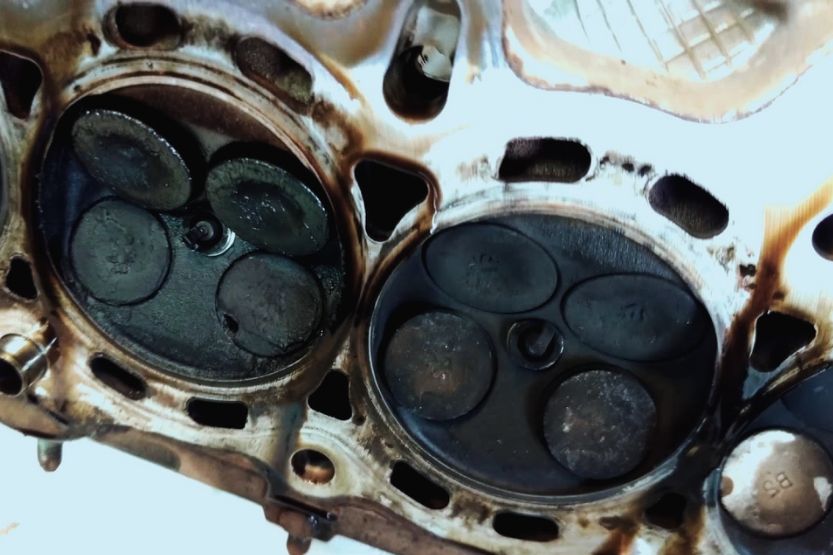
If you want to enjoy your car’s service for a long time, you need to be aware of the potential problems that may crop up in its engine. One of the things that can cause an engine to stop running is burnt valves.
So, if you want your engine to run efficiently for years to come, you need to know the signs that show if its valves are already burning. Here is a list of these burnt exhaust valve symptoms:
1. Misfiring Engine
Cause
An engine misfires when one cylinder or all cylinders fail to generate the correct amount of combustion. All the cylinders need to work correctly to function properly.
They should receive the right amount of fuel and air every combustion cycle and the spark from the spark plug at the right time. However, if an exhaust valve is burnt, there will be no proper compression of the air, and fuel and misfiring will result.
In other words, when a cylinder or all cylinders are misfiring, it is the usual sign of burnt valves. You have to be aware of this symptom so that you will be able to correct the problem before it gets worse.
When valves are burnt, the gases produced by the combustion escape between the valve seats and the valves. The escaping gas will cause the exhaust valves to erode, which will then cause premature failure of the valves.
When the valves cannot provide complete sealing, there will be compression loss, resulting in the loss of engine power.
How to Diagnose
To diagnose this issue, car mechanics usually conduct a compression test to assess the cause of low engine power. But if you see white smoke from the exhaust pipe, which smells like gasoline, it indicates that the valves cannot seal the cylinders completely.
How to Fix
This means some of the fuel is not being burned inside the cylinders. Eventually, the unburned fuel will cause the failure of the catalytic converter. To avoid premature wear and failure of other engine parts, you must replace the bad valves immediately.
2. Rough Idling
For the engine to run smoothly, it needs three things: the right fuel and air mixture, the proper compression pressure, and sparks from the spark plugs that will come at the right time. All three things should work together correctly inside the cylinders or combustion chambers of the engine.
The cylinder must be adequately sealed so that all actions occurring inside it will happen correctly. However, if the sealing is compromised, there will be a loss of compression. The engine will misfire, resulting in the rough idling of your car.
The crucial engine components that provide complete sealing are the valves. So, if there is only one valve that is failing, complete sealing will not be possible. When that happens, there will be rough engine idling.
3. Poor Performance of the Engine
If you notice that your engine is not performing as it used to, it could be a sign of a burnt valve or burnt valves. What does a burnt valve look like? When a valve gets burned, small holes can develop on the metal where gases from the combustion chamber can leak out.
There will be compression losses, which in turn will result in poor engine performance. This happens because the valves cannot seal the cylinder or combustion chambers completely due to holes. A burnt valve can cause the engine to lose its power by as much as 25%.
4. Air Leaks at Throttle Body or Exhaust
Replace the Bad Valves
Another symptom of burnt valves is if the air is leaking at the exhaust or the throttle body. If this is the case, you will hear the air as it escapes through these channels. To contain the leakage, you need to replace the bad valves.
Conduct a Leak Test
By conducting a leak test, you will know if a valve is burnt or failing. The steps that car mechanics take in performing this test are the following:
- Rotate the crank pulley until one cylinder is on power or compression stroke.
- Make sure the intake and exhaust valves are both closed.
- Remove the spark plugs and the ignition coil.
- They use an air compressor and put air into the cylinder where the spark plugs are located.
5. Difficulty in Starting the Engine
A burnt valve won’t allow gas, air, and fuel mixture inside the cylinder. There will be no combustion that will take place in that cylinder, even if the other cylinders have no problems at all.
With one cylinder not firing up, the engine will have difficulty starting. So, if you find it hard to start the engine, especially during cold starts, you probably have a burnt valve or burnt valves inside your engine.
6. Puttering or Puffing Sound
The engine can also produce strange noises like puffing or puttering sounds if it has a burnt valve. You may hear this burnt valve sound each time the affected cylinder tries to fire.
To make sure that a burnt valve causes these sounds, some people suggest holding a dollar bill over the exhaust pipe. If the paper flaps and gets sucked frequently when the engine runs, they say it is a sure sign of a burnt valve issue.
7. Activated Check Engine Light
If there is any problem with the engine, the Check Engine light on your dash will turn on. One of the problems that could trigger this light is a burnt valve inside the engine. The ECU or electronic control unit of your car is the one that monitors the status of every component of your car’s power train.
The engine is the essential part of your car’s power train. So, this light will turn on if there’s a misfire due to a leak in the exhaust valve. When this happens, the ECU will store a diagnostic trouble code corresponding to this problem.
8. Emission Test Failure
Have you brought in your car for an emission test that failed? It signifies that you have a burnt exhaust valve inside your engine. If this valve is burnt, the engine will emit hydrocarbons out of the exhaust pipe. That’s why it failed its emission test.
Can you drive with a burnt valve? Of course, you can still drive your car with a burnt valve. However, you are risking more damage to your engine. Your best move is to avoid driving your vehicle until you fix the problem.
How to Do a Smoke Test on a Car?
Burnt Valve Overview
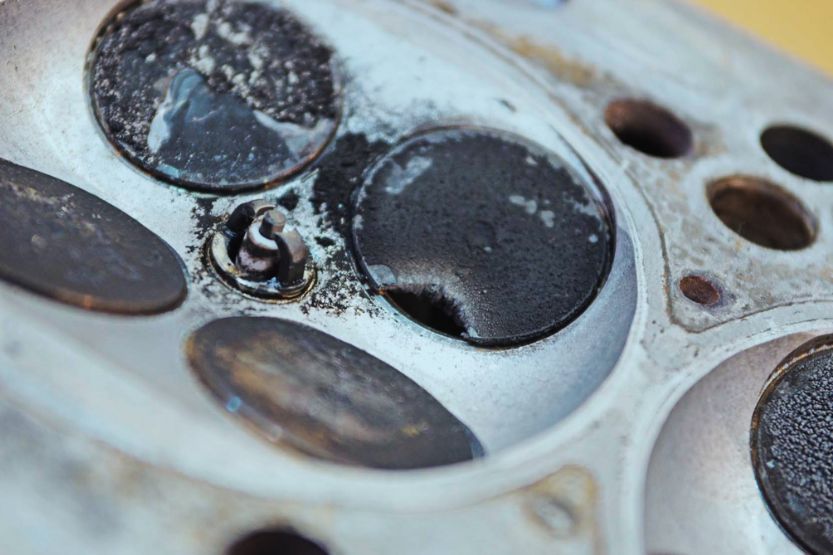
To fully understand the issue of burnt valves, there is a need to explain, in simple terms, how an engine works. The typical engine used in most passenger cars is the gasoline engine. This engine refers to the internal combustion engine (ICE).
ICE Has Camshafts That Controls the Valves
An ICE has one or more camshafts that open and close valves connected in series. These valves are installed in the cylinder heads and are held there by guides. Every cylinder in an ICE has two to four valves. The total number of valves depends on the design of the ICE.
Two Kinds of Valves
There are two kinds of valves in ICEs – the intake and exhaust valves. The intake valve lets the air and fuel mixture into the cylinders, where they get burned. Not all the air and fuel allowed inside the cylinders get burned.
The unburned gases must be expelled from the cylinder. This is the role of the exhaust valve. When the combustion process is completed, the exhaust valve opens to let the exhaust gases escape through the exhaust or tailpipe.
Air and Fuel Mixture Is Burned Inside the ICE’s Cylinders
As you can imagine, when the air and fuel mixture is burned inside the cylinders of an ICE, tremendous heat and pressure are bearing down on the intake and especially on the exhaust valves. The valves can experience thermal shock, which can cause their edges to burn away.
Valves Experience Heat and Stress Due to the Burning of Fuel
As the process of burning fuel is repeated thousands of times while the engine is running, the valves take all the heat and stress. Over time, their edges will crack, develop holes or even break off.
The exhaust valves are the most vulnerable because they can’t benefit from the cool air that the intake valves can enjoy. This is the reason why the exhaust valves run hotter. That’s why in ICEs, they are usually the valves that get burned often.
Again, what are the symptoms of a burnt valve? A car’s cylinder has a burnt valve if it won’t properly seal. As a result, your vehicle will lose compression, then start to run rough and misfire.
What Causes Burnt Valves
There are several causes why valves burn. Here are some of the most common causes of this problem:
1. Insufficient Engine Cooling
The engine has an optimal working temperature which is very hot. A coolant takes off the excessive heat that can cause the engine to fail.
In other words, the coolant plays the role of ‘cooling’ the engine while running under high temperatures.
So, you can see that if there’s insufficient cooling going on, meaning there’s not enough coolant in the system, there will be excessive heat, more than what the engine and its components can handle.
Excessive heat can burn engine components, and that includes exhaust valves. This is what causes a burnt valve.
2. Valves Not Seated Properly
A valve not sitting correctly or sticking open on top of the cylinder head will allow gas to sneak past it. And that will cause that valve to burn. One of the common causes of this incorrect valve seating is improper machine work.
Another cause is wear and tear of the valve seat. A third cause is an incorrect lash adjustment. And yet another cause is the erosion of the valve seat. Additional causes of valves not seating correctly are improper valve stem-to-guide clearance, the buildup of carbon deposits, and weak valve springs.
3. Lean Air and Fuel Mixture
If the air and fuel mixture entering the cylinders is too lean, there will be too much air and very little fuel to ensure good ignition. This condition will lead to fuel burning at high temperatures, more than what is typical for the engine and its components to handle.
In other words, engine components like the exhaust valves can experience excessive heat. If these exhaust valves don’t have valve guides, they will eventually burn out.
4. Poor Engine Performance
An engine that performs less than normal can also cause burning out of the valves. Engine problems leading to valve burnout include pre-ignition, lean air to fuel mixture, and detonation.
5. High Engine Operating Temperature
The engine has an optimum engine operating temperature. If your machine runs at a temperature higher than its optimum running temperature, you will encounter engine problems. One of these problems is burnt valves.
A defective water pump can cause the engine to run at temperatures higher than normal. Engine operating temperature can also increase more if the head gasket has rust or there are blockages in the coolant channels.
How to Fix Burnt Valves
A Mechanic Can Repair Minor Damage
Fixing a burnt valve depends on the damage it has sustained. If it’s only minor damage, a mechanic should be able to repair it. However, if the burn on the valve is extensive, there is nothing you can do to fix it.
Cylinder Removal and Repair of the Damaged Part
Fixing a still repairable valve involves the removal of the cylinder head and repairing the damaged part. Again, a minor burn may be able to repair the valve. However, a significant burn will require a complete replacement of the damaged valve.
Expect to Pay from $1,000 to $2,500
Fixing a burnt valve is very costly because of the labor involved. You have to take the engine apart to get to where the valves are located. And that will take a skilled mechanic plenty of time to complete. That is why the labor cost is high for this repair work.
So, if you have a burnt valve, expect to pay from $1,000 to $2,500. The actual cost will depend on the extent of your situation and your vehicle’s make and model year.
Expensive Labor Cost
The labor cost of a valve job is very expensive. It may take up to 7 hours to have the valve resurfaced, drilling out of the seats, and reseating the valves. The cost of labor can run from $70 to 150 per hour. For labor alone, you may be spending around $770.
Frequently Asked Questions
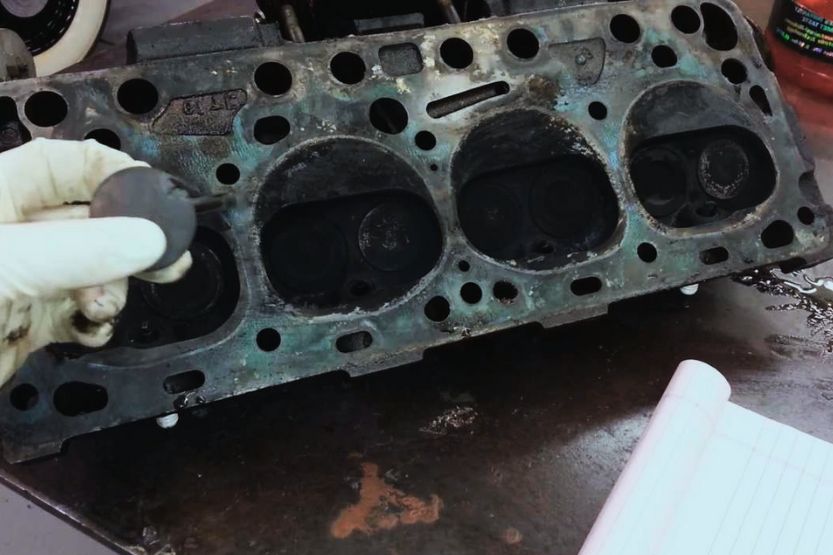
You may be new to the topic of burnt valves. So, I have gathered the answers to the most often asked question about this subject so that you can have a better understanding of it:
What Are the Symptoms of Burnt Valves?
The usual symptoms of burnt valves are the following:
- Misfiring engine
- Rough idling
- Poor engine performance
- Air leaks at the exhaust or throttle body
- Hard starting engine
- Puttering or puffing Sound
- Check Engine Light
What Are the Causes of Burnt Valves?
- Insufficient engine cooling
- Improperly seated valves
- Lean air and fuel mixture
- Poor engine performance
- High engine operating temperature
Can You Fix a Burnt Valve?
No, if an exhaust valve is burnt, it can no longer be fixed. It has to be replaced if the engine is to function correctly again.
Is It Expensive to Fix Burnt Valves?
Yes, a valve job is very costly. You can expect to pay $1,000 to $2.500 to fix this problem. The repair work may take around 7 hours to complete.
So, labor is the most costly part of this repair. Labor costs can range from $70 to 150 per hour. You could be spending about $770 just for the labor cost.
In Closing: Symptoms, Causes, and How to Fix Burnt Valve
If just one of the engine cylinders gets burned, you will experience rough idling, misfiring, and a reduction in engine power. These are just three of the symptoms that usually indicate that the engine valves are failing. These issues should be fixed if you want to restore your engine’s power.
The intake and exhaust valves operate in tandem for air to get in and out of the engine cylinders. But there are times when these valves run very hot.
That’s when they start to get burned. Once they are burned, it will compromise the sealing of the cylinders. This will result in compression loss and loss of engine power.


![Driving With a Bad Purge Valve [What Happens? Signs and Symptoms] driving with a bad purge valve](https://roadsumo.com/wp-content/uploads/2022/02/driving-with-a-bad-purge-valve-150x150.jpg)
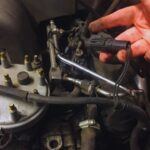
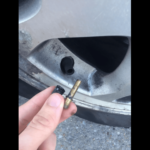
![Bad Timing Belt Symptoms [6 Main Symptoms] Bad Timing Belt Symptoms](https://roadsumo.com/wp-content/uploads/2021/09/bad-timing-belt-symptoms-150x150.jpg)
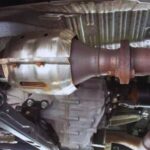
![Read more about the article 5.7 Hemi Problems [7 Most Common]](https://roadsumo.com/wp-content/uploads/2021/11/5.7-Hemi-Problems-300x200.jpg)
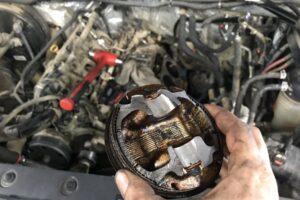
![Read more about the article Interference Engine List [and Non-Interference Engine List]](https://roadsumo.com/wp-content/uploads/2021/06/interference-engine-list-300x200.jpg)